Electricity on the plane
I want to tell readers of Geektimes about electricity on an airplane. About where it comes from, how it is converted and where it is spent. I will describe all this on the basis of the CRJ-200 aircraft. As for the other types of aircraft, much is similar, the principles are repeated, the difference in nuances.

So, let's begin. The entire power system of the aircraft is divided into 2 subsystems: a three-phase alternating current power supply system with a voltage of 115V and a frequency of 400Hz and a direct current power supply system with a voltage of 28V. Why not familiar to us 50Hz? Here the decisive role was played by the fact that with increasing frequency it was possible to reduce the size and weight of transformers and other electric machines. And this is very good for an airplane, because no one wants to transport extra kilos. Go through each system.
The main sources of electricity for this system are 2 generators (IDG - integrated-drive generators), which are installed on the drive box of each engine and are driven by a high-pressure turbine shaft.
')

The power of each is 30kVA. Since the rotations of the jet engine are not constant, in order to obtain a stable frequency of 400 Hz at the generator output, it is necessary that the generator shaft rotates at a constant value of rotations. To do this, a mechanism is installed inside the generator, which does this. On the Soviet technology, it was called constant speed drive, and here CSD - constant speed drive. It converts the variable input speed into constant 12,000 rpm at the output. In the photo above, the left side is CSD, and the right is the generator itself. The possibility of disconnecting the generator from the drive box is also provided. Disconnection can be both manual and automatic. The generator is automatically turned off in two cases: when the oil temperature in the CSD exceeds the allowable value or when a very large torque occurs on the shaft, for example, something will fall apart inside and jam it. Pilots use manual disconnection if something happens to the generator in flight.
An additional source of alternating current is the auxiliary power generator (APU - a small gas turbine engine installed in the tail of the aircraft). The generator here is the same as on the engine, except that it is without a drive constant speed. The APU, in contrast to the engine, always rotates with constant revolutions, and the need for it has disappeared. This generator can be used to power the aircraft in the air, in case of failure of one of the generators installed on the engine. It is also used to power the aircraft on the ground when the engines do not work.
An emergency source of alternating current is an ADG - air driven generator, a turbine that spins up with an oncoming airflow.
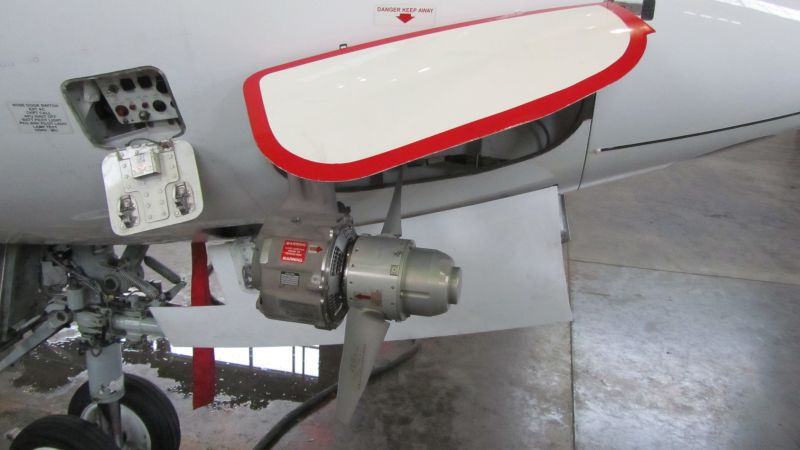
Produced manually or automatically when it becomes completely bad with electricity. There is a generator on the same shaft as the turbine, which gives us 15kVA AC three-phase current 115V 400Hz. Only vital consumers are powered from it.
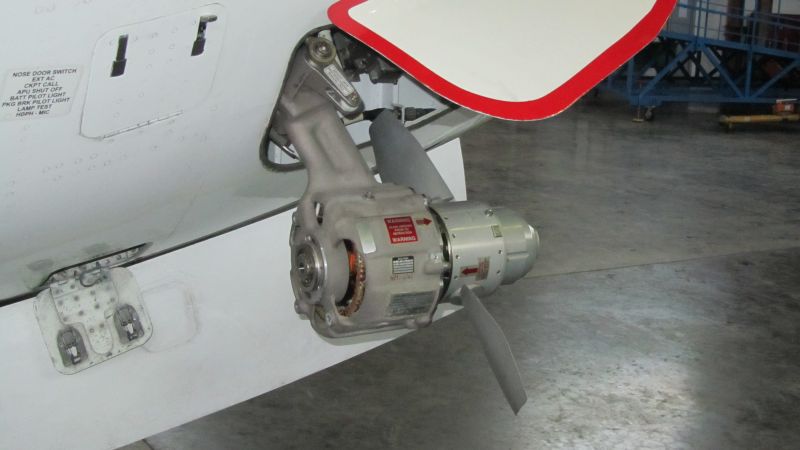
The main sources of DC on the plane are 5 TRU rectifier devices - transformer rectifier units.
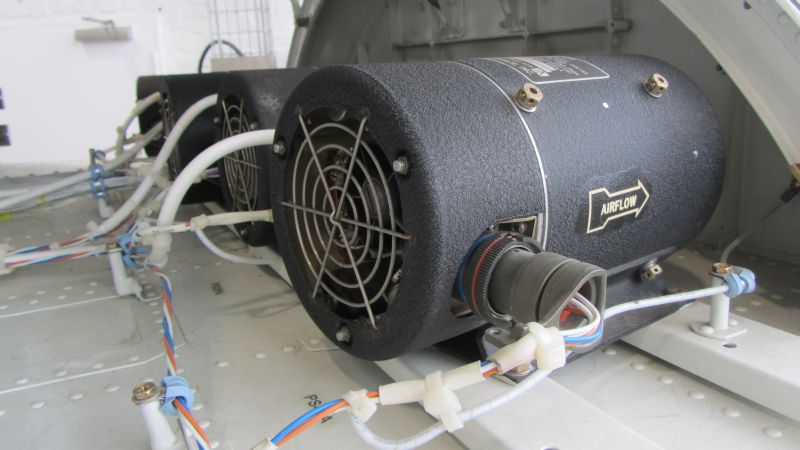
They convert 115V 400Hz AC to 28V DC. The maximum current that such a rectifier can produce is 100A. In the photo you can compare what thickness of the wire is suitable for the rectifier, and what goes.
Another source of direct current are 2 nickel-cadmium batteries: Main Battery and APU Battery. Main Battery - 24V 17Ah. APU Battery - 24V 43Ah.
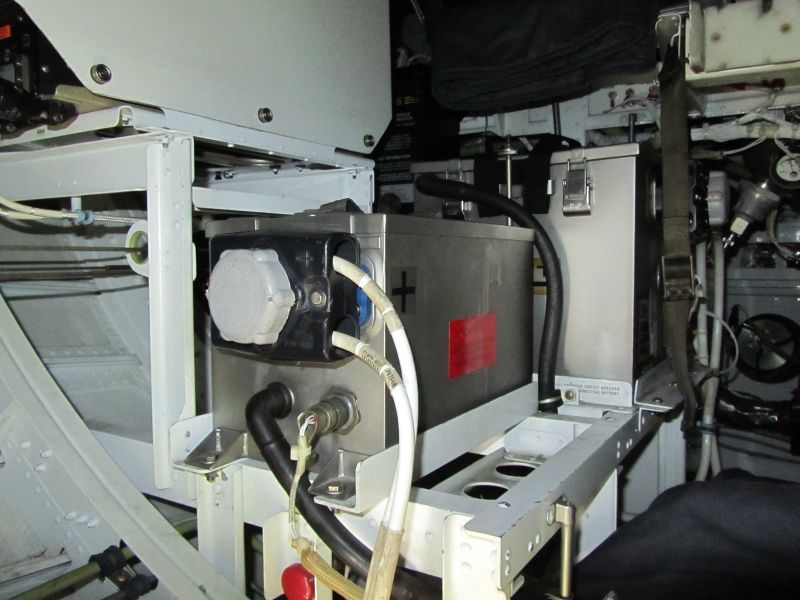
Each battery has its own charger, which keeps the battery fully charged.
To power the aircraft with electricity on the ground there are 2 connectors. One in the nose - to connect the AC.
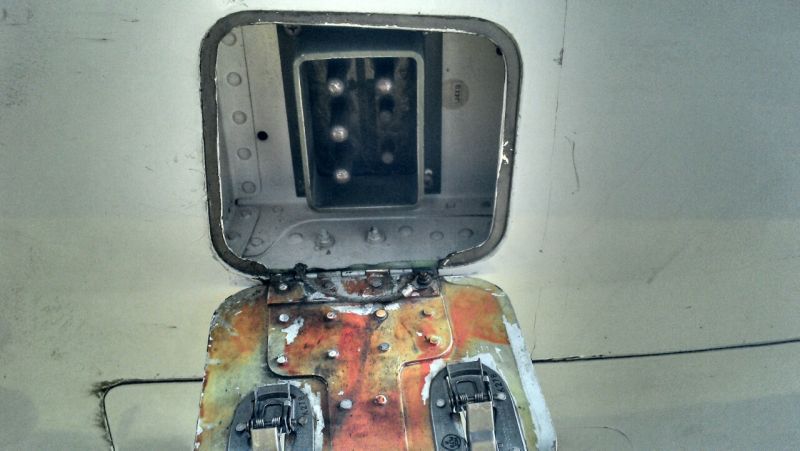
The second in the rear of the aircraft - for permanent:
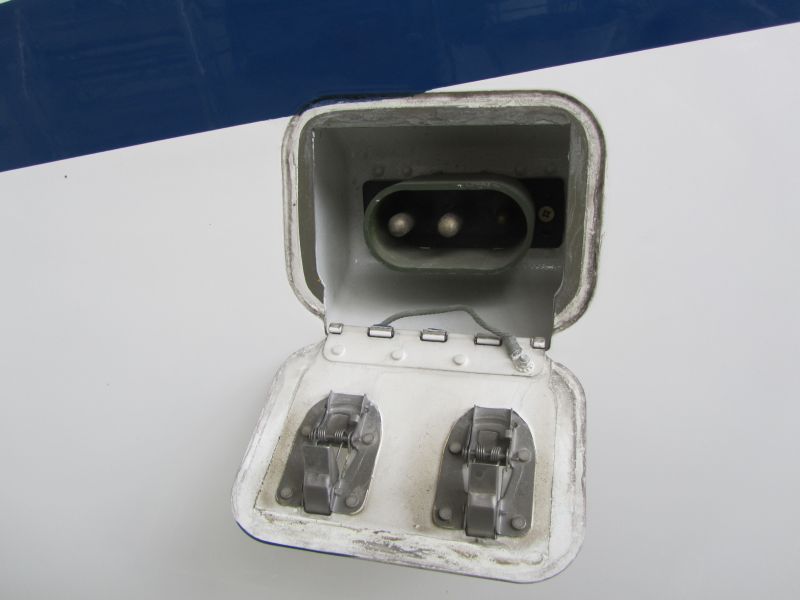
In practice, the latter is used very rarely. The main is alternating voltage, and from it you can already get everything else.
That's all. If there is interest in this topic, I plan to continue. Plans to talk about how it all commutes, distributed and reserved. And in the future - who consumes it all and for what.

So, let's begin. The entire power system of the aircraft is divided into 2 subsystems: a three-phase alternating current power supply system with a voltage of 115V and a frequency of 400Hz and a direct current power supply system with a voltage of 28V. Why not familiar to us 50Hz? Here the decisive role was played by the fact that with increasing frequency it was possible to reduce the size and weight of transformers and other electric machines. And this is very good for an airplane, because no one wants to transport extra kilos. Go through each system.
Ac system
The main sources of electricity for this system are 2 generators (IDG - integrated-drive generators), which are installed on the drive box of each engine and are driven by a high-pressure turbine shaft.
')

The power of each is 30kVA. Since the rotations of the jet engine are not constant, in order to obtain a stable frequency of 400 Hz at the generator output, it is necessary that the generator shaft rotates at a constant value of rotations. To do this, a mechanism is installed inside the generator, which does this. On the Soviet technology, it was called constant speed drive, and here CSD - constant speed drive. It converts the variable input speed into constant 12,000 rpm at the output. In the photo above, the left side is CSD, and the right is the generator itself. The possibility of disconnecting the generator from the drive box is also provided. Disconnection can be both manual and automatic. The generator is automatically turned off in two cases: when the oil temperature in the CSD exceeds the allowable value or when a very large torque occurs on the shaft, for example, something will fall apart inside and jam it. Pilots use manual disconnection if something happens to the generator in flight.
An additional source of alternating current is the auxiliary power generator (APU - a small gas turbine engine installed in the tail of the aircraft). The generator here is the same as on the engine, except that it is without a drive constant speed. The APU, in contrast to the engine, always rotates with constant revolutions, and the need for it has disappeared. This generator can be used to power the aircraft in the air, in case of failure of one of the generators installed on the engine. It is also used to power the aircraft on the ground when the engines do not work.
An emergency source of alternating current is an ADG - air driven generator, a turbine that spins up with an oncoming airflow.

Produced manually or automatically when it becomes completely bad with electricity. There is a generator on the same shaft as the turbine, which gives us 15kVA AC three-phase current 115V 400Hz. Only vital consumers are powered from it.

DC system
The main sources of DC on the plane are 5 TRU rectifier devices - transformer rectifier units.

They convert 115V 400Hz AC to 28V DC. The maximum current that such a rectifier can produce is 100A. In the photo you can compare what thickness of the wire is suitable for the rectifier, and what goes.
Another source of direct current are 2 nickel-cadmium batteries: Main Battery and APU Battery. Main Battery - 24V 17Ah. APU Battery - 24V 43Ah.

Each battery has its own charger, which keeps the battery fully charged.
Ground feeding
To power the aircraft with electricity on the ground there are 2 connectors. One in the nose - to connect the AC.

The second in the rear of the aircraft - for permanent:

In practice, the latter is used very rarely. The main is alternating voltage, and from it you can already get everything else.
That's all. If there is interest in this topic, I plan to continue. Plans to talk about how it all commutes, distributed and reserved. And in the future - who consumes it all and for what.
Source: https://habr.com/ru/post/367477/
All Articles